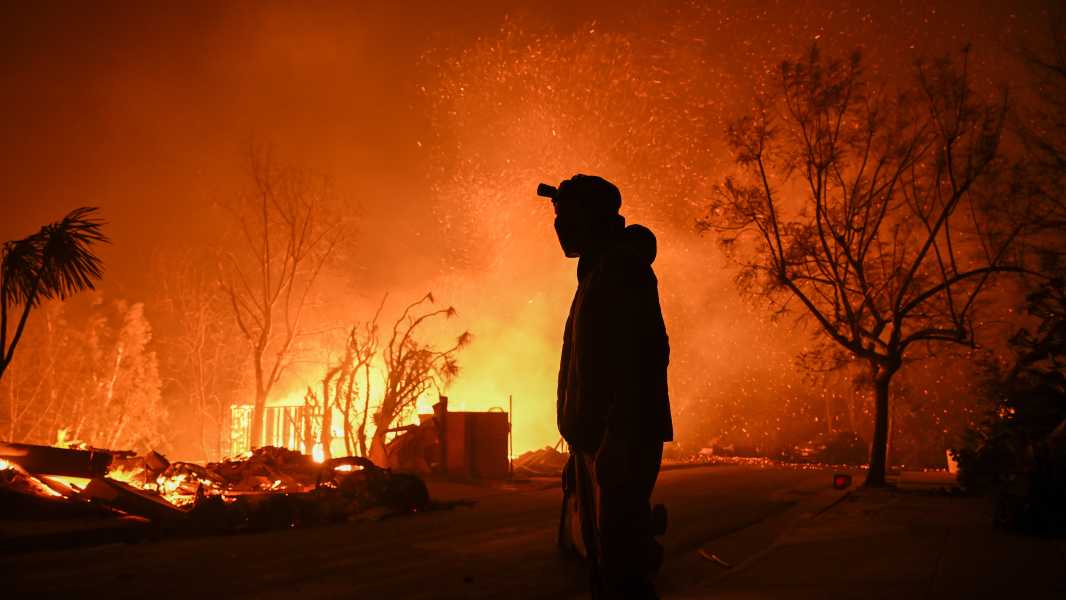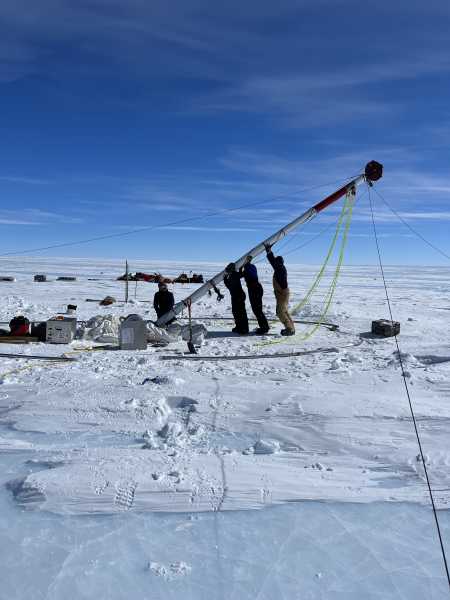
Deadly wildfires engulfed parts of Los Angeles in January as the planet continues to warm. (Photo credit: Tayfun Coskun/Anadolu via Getty Images)
Climate scientists said last month was the warmest January on record, despite the start of the cold season in the Pacific region and record low temperatures in parts of the United States.
The average global surface air temperature in January 2025 was 55.81 degrees Fahrenheit (13.23 degrees Celsius), 0.16 degrees warmer than 55.65 degrees Fahrenheit (13.14 degrees Celsius) in 2024, the previous warmest January on record. While the increase is small, scientists had expected temperatures to be cooler this year.
In January, the Earth entered a La Niña phase, which is the cold phase of a natural climate cycle known as the El Niño-Southern Oscillation. El Niño periods raise global temperatures, as they did in 2023 and 2024, while La Niña typically cools them. However, the current La Niña began later than experts expected, and it is unusually weak.
The unusually high temperatures in January 2025 continue a troubling trend in global warming. Last year was the hottest on record and the first full year in which temperatures exceeded 2.7 F (1.5 C) above preindustrial levels, the projected average temperature between 1850 and 1900. World leaders previously agreed to limit warming to preferably below 2.7 F and well below 3.6 F (2 C) under the 2015 Paris Agreement, a legally binding international treaty.
In January of this year, the temperature was 3.15 F (1.75 C) above pre-industrial levels. It was the 18th month out of the last 19 that the temperature exceeded 2.7 F, according to a statement released by the European Union's Copernicus climate change service.
“January 2025 will be another remarkable month, maintaining the record temperatures seen over the past two years despite the development of La Niña conditions in the tropical Pacific and their temporary cooling effect on global temperatures,” said Samantha Burgess, climate strategy manager at the European Centre for Medium-Range Weather Forecasts, which implements the Copernicus programme.
US is colder than average
Weather patterns vary around the world, so a global increase in average temperatures doesn’t always mean that all regions are warming. Overall, the U.S. was colder than usual in January, with thunderstorms and snowfalls hitting the East Coast and Midwest, and historic blizzards sweeping the Deep South and Gulf Coast. However, dry conditions in Southern California contributed to the deadly wildfires that ravaged Los Angeles, while regions like Minnesota experienced record-breaking heat.
Above-average temperatures were also recorded north of the contiguous U.S., where Alaska was 5 F (2.8 C) above normal, The Washington Post reported. Northeastern and northwestern Canada were also relatively warm, the Copernicus program said.
Around the world, Australia experienced historic heatwaves, while southern parts of South America, Africa, Antarctica, Siberia and parts of Europe experienced mostly above-average temperatures.
Global warming is primarily due to humanity releasing record amounts of greenhouse gases into the atmosphere through the burning of fossil fuels, according to a statement released by the United Nations. Carbon dioxide (CO₂), methane (CH₄) and other greenhouse gases
Sourse: www.livescience.com





